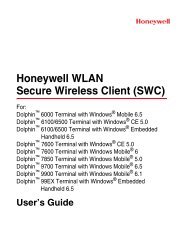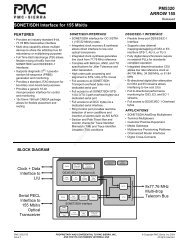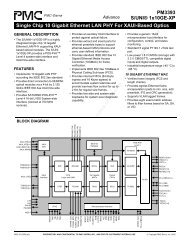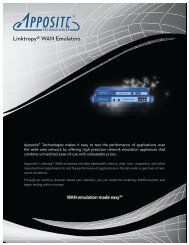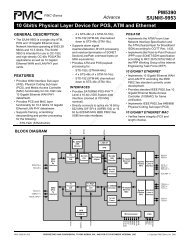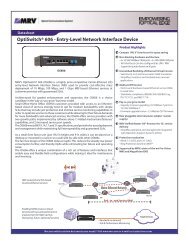Architecture, Engineering, and Related Services [NAICS 5413]
Architecture, Engineering, and Related Services [NAICS 5413]
Architecture, Engineering, and Related Services [NAICS 5413]
Create successful ePaper yourself
Turn your PDF publications into a flip-book with our unique Google optimized e-Paper software.
up with the buildingSMARTalliance to create the Open BIM initiative which attempts to more clearly<br />
define BIM for the industry using the buildingSMART Data Model <strong>and</strong> establish a BIM certification<br />
process (Open BIM Program, 2012).<br />
Benefits of BIM:<br />
• Seamless communication between design <strong>and</strong> construction teams<br />
• Up to date, reliable data about a building’s design construction<br />
• Reduction in data collection redundancies (data can be re-used by many stakeholders)<br />
• Design issues can be identified <strong>and</strong> addressed earlier in the process<br />
• Building performance can be predicted prior to construction <strong>and</strong> closely monitored after<br />
construction<br />
• Information gathered through BIM can be shared with facility managers who then use this<br />
information to make informed decisions about building maintenance moving forward<br />
One sign that BIM will be extremely instrumental in the way that architecture firms will manage<br />
projects <strong>and</strong> processes in the future is the current development of National BIM St<strong>and</strong>ards here in<br />
the U.S. These st<strong>and</strong>ards are being developed by the National Building Information Model St<strong>and</strong>ard<br />
Project Committee - United States, is a project committee of the buildingSMART alliance which is a<br />
council of the National Institute for Building Sciences (NIBS) (National BIM St<strong>and</strong>ard-United States,<br />
2012). The development of these st<strong>and</strong>ards is still very much in the nascent stages. The first version<br />
of these st<strong>and</strong>ards was released in December 2007 <strong>and</strong> the second version is scheduled to be<br />
released in May 2012 (D.Smith, personal communication, April 26, 2012). Developing BIM st<strong>and</strong>ards<br />
is a significant challenge because BIM has the potential to “involve all aspects of the facilities<br />
industry, including architects, engineers, contractors, insurers, unions, manufacturers, lawyers,<br />
homebuilders, vendors, owners, consumers, local, state <strong>and</strong> federal governments, codes <strong>and</strong><br />
st<strong>and</strong>ards developers, <strong>and</strong> testing representatives” (buildingSMART alliance, 2010). Ultimately, the<br />
goal is to create a set of st<strong>and</strong>ards whose core tenets can be used in other countries, perhaps with<br />
some localization (National BIM St<strong>and</strong>ard-United States, 2012).<br />
CONCLUSION<br />
Architectural services is characterized by strong economic fluctuations- strong business conditions<br />
result in large upturns while a weaker economy results in large downturns. The industry is highly<br />
competitive. Sustainable design <strong>and</strong> building will become an even more important aspect of the<br />
business moving forward, particularly with regards to LEED certifications. While an architectural<br />
services is already a globalized industry, increased collaborations between international firms will<br />
continue to grow. Technical knowledge, particularly with regards to Building Information Modeling<br />
(BIM) will become an increasingly necessary skill for architects.<br />
REFERENCES:<br />
AIA Code of Ethics & Bylaws (2004). Available from:<br />
http://www.aia.org/about/ethics<strong>and</strong>bylaws/AIAS077624<br />
4


![Architecture, Engineering, and Related Services [NAICS 5413]](https://img.yumpu.com/34014793/5/500x640/architecture-engineering-and-related-services-naics-5413.jpg)


